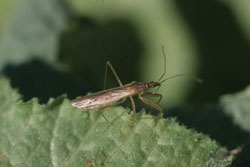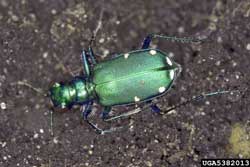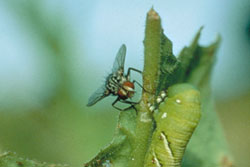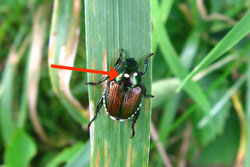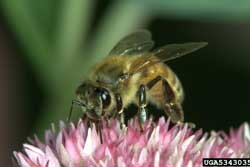Home → Is it a Pest? → Beneficial Organisms
Beneficial Organisms
On this Page:
- Should I purchase beneficial organisms for my garden or yard?
- What is a Beneficial Organsim?
- Difference Between Pest and Beneficial
- Photos of Beneficial Organsims
Should I purchase beneficial organisms for my garden or yard?
Do not purchase and release beneficial organisms (sometimes called biological control organisms). These can include, but are not limited to, praying mantises, ladybugs (really beetles), and dragonflies.
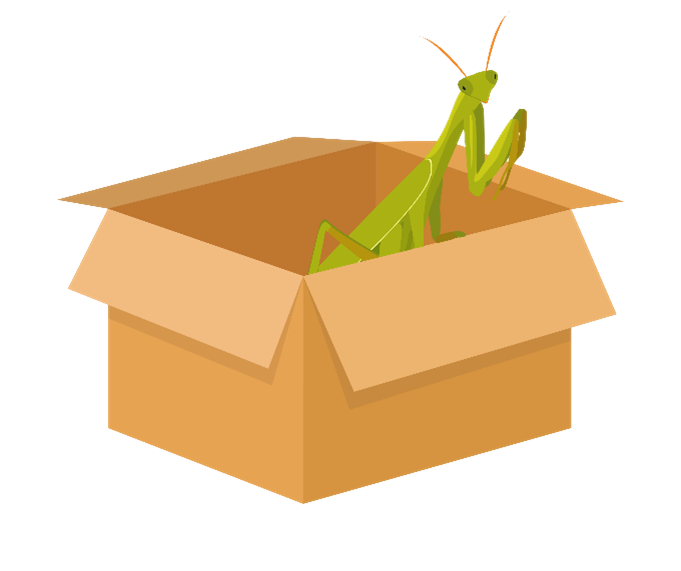 You may have heard about this idea from social media or garden presentations. Still, it is a common misconception that doing so is legal or safe. Purchasing and releasing these organisms can harm Maine's delicate ecosystems and likely provide little to no benefit to you as the consumer.
You may have heard about this idea from social media or garden presentations. Still, it is a common misconception that doing so is legal or safe. Purchasing and releasing these organisms can harm Maine's delicate ecosystems and likely provide little to no benefit to you as the consumer.
Unfortunately, it can be confusing as it is relatively easy to purchase beneficial organisms online and sometimes in stores that do not follow (or do not know) state regulations.
If you were excited about releasing beneficial insects and now feel a little disappointed, don't fret!
You can still welcome a whole army of heroes to your yard through conservation biological control. Conservation biological control simply means creating the habitat where Maine's native beneficial insects already thrive. By planting a variety of native flowering plants that bloom from spring through fall, leaving some natural areas for shelter, and "thinking first and spraying last," you'll attract pollinators, lacewings, predatory beetles, parasitic wasps, and many more.
These insects will show up on their own, stick around, and do the work naturally. No shipping boxes or releases are required. It's better for your garden and Maine's ecosystems, and frankly, it's more fun to watch your yard come alive with its built-in team of defenders. The Xerces Society has a fantastic guide to get you started, along with the Maine Yardscaping website which has several guides as well.
What about beneficial nematodes?
Beneficial nematodes are an exception. These microscopic roundworms are already found in soils worldwide, including Maine. When purchased, they are applied directly to the soil where they seek out pests like grubs and cutworms. They don't survive long-term without pests to feed on, and they don't harm people, pets, pollinators, or plants. Because they stay in the soil and don't disrupt native ecosystems, beneficial nematodes are allowed for use in Maine.
What is a Beneficial Organism?
The concepts of “beneficial” and “pest” are strictly human defined. All organisms serve a useful purpose in the ecosystem, and are therefore, by default, beneficial. As the term is applied here, however, it means any living thing that benefits the environment around us (humans), including insects, spiders, mites, nematodes, birds, reptiles, mammals, plants, bacteria, fungi, and viruses. The benefits they provide include pest management, pollination, and maintenance of soil health.
The opposite of beneficial organisms are pests. Any organism can be considered a pest, by humans, if it negatively affects those humans (see Is It Really a Pest? for more). These living things can be detrimental to human needs and may damage plants, sting, bite or spread diseases.
Difference Between Pest and Beneficial
For example, honey bees are usually thought of as beneficial because they pollinate crops and produce honey; however, if a swarm takes up residence in your home and you get stung, you are more likely to define them as pests. Even plant-feeding organisms may be considered beneficial if they are feeding on unwanted plants like purple loosestrife but if those same bugs start devouring your favorite petunias you may not think of them as beneficial.
Organisms are said to be beneficial when they help reduce pest damage. The action of one living organism controlling the populations of another organism is called biological control and the organisms that feed on pests are called natural enemies. Virtually all insect and mite pests and a few plant pests have some natural enemies. Learning to recognize and encourage these natural enemies can help reduce pest populations and consequently reduce pest damage and the need for costly pesticides or other control measures.
Natural enemies are classified into three general groups: predators, parasites or parasitoids, and pathogenic organisms. Predators are selected for their ability to feed directly on nuisance insect or plant species. An example of a predator is the green lacewing which feeds upon aphids or Galerucella beetles that eat purple loosestrife.
Parasites, or parasitoids, have complicated life cycles which involve laying their eggs within a living insect host or invading their bodies directly. An example of a parasitoid is the winsome fly which lays its eggs on the backs of Japanese beetles. Hb nematodes are parasites which find their way inside grubs and other insects through their many breathing holes (spiracles) or through their digestive system. Pathogens are essentially bacterial, fungal, or viral organisms which disrupt the lifecycle of nuisance insects or plants. A widely used bacterium is Bacillus thuringiensis (Bt), which has the potential to control caterpillars like gypsy moth, Colorado potato beetle larvae and mosquito larvae (wigglers). Beauveria bassiana is a fungus that can be used to control ticks.
You can help these important organisms by growing the right types of plants which provide food and cover.
Photos of Beneficial Organisms
Below are pictures of some beneficial bugs that you might see in Maine. Adults are usually pictured, because that is what is most often seen by homeowners; keep in mind, however, that other stages of the insects may be providing the benefit.
Predators
Bugs that feed on nuisance insect or plant species.
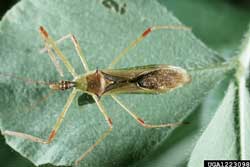
Assassin Bugs
Info at Univ. of Kentucky
Beneficial Insects: True Bugs (PDF)
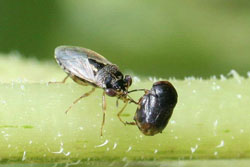
Big-eyed Bugs
Beneficial Insects: True Bugs (PDF)
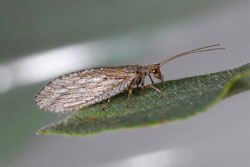
Brown Lacewings
Info at Univ. of Kentucky
Berries & Biocontrol (PDF)
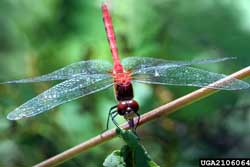
Dragonflies and Damselflies
Info at Univ of California San Diego
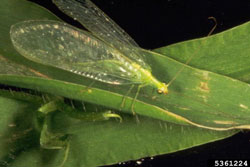
Green Lacewings
Info at Univ. of Kentucky
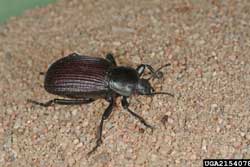
Ground Beetles
Info at UMaine Extension
Berries & Biocontrol (PDF)
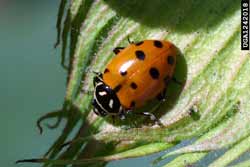
Lady Beetles
Info at Univ. of Colorado Extension
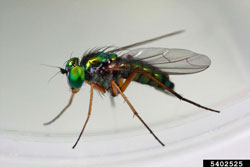
Long-legged Flies
Info at AgriLife Texas
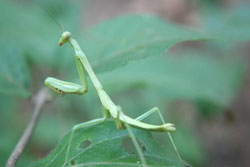
Mantids
Info at Univ. of Kentucky
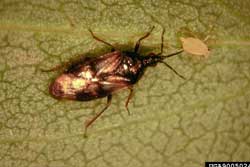
Minute Pirate Bugs
Beneficial Insects: True Bugs (PDF)
Berries & Biocontrol (PDF)
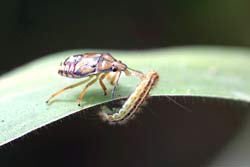
Predaceous Stink Bugs
Beneficial Insects: True Bugs (PDF)
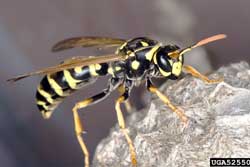
Predatory Wasps
More About Bees, Wasps and Hornets
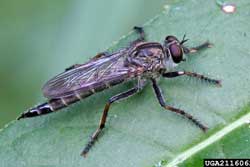
Robber Flies
Info at NC State Extension
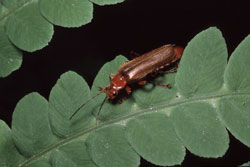
Soldier Beetles
Info at Iowa State University
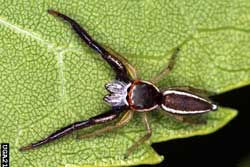
Spiders
More About Spiders
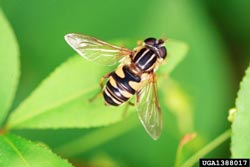
Syrphid Flies (Hover or Flower Flies)
Info at Washington State University
Parasites (Parasitoids)
Insects that lay eggs on, or directly invade, the bodies of a living insect host
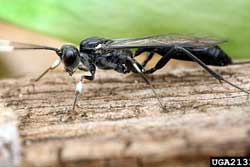
Parasitic Wasps—A large variety including Braconid and Ichneumonid Wasps
Info at University of Maryland Extension
Berries & Biocontrol (PDF)
Pollinators
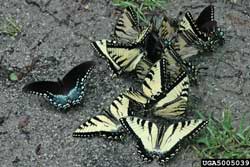
Butterflies and Moths
Info at Butterflies and Moths of North America
[Photos, left to right: (assassin bugs) Louis Tedders, USDA Agricultural Research Service, Bugwood.org; (big-eyed bugs) Russ Ottens, University of Georgia, Bugwood.org; (brown lacewings) Joseph Berger, Bugwood.org (damsel bugs) Alton N. Sparks, Jr., University of Georgia, Bugwood.org; (dragonflies and damselflies) David Cappaert, Michigan State University, Bugwood.org (green lacewings) Frank Peairs, Colorado State University, Bugwood.org (ground beetles) Joseph Berger, Bugwood.org (lady beetles) Russ Ottens, University of Georgia, Bugwood.org (long-legged flies) Joseph Berger, Bugwood.org (mantids) Tom Coleman, University of Kentucky, Bugwood.org (minute pirate bugs) Bradley Higbee, Paramount Farming, Bugwood.org (predaceous stink bugs) Russ Ottens, University of Georgia, Bugwood.org (predatory wasps) David Cappaert, Michigan State University, Bugwood.org (robber flies) David Cappaert, Michigan State University, Bugwood.org (soldier beetles) Jim Occi, BugPics, Bugwood.org (spiders) ; (syrphid flies) Steven Katovich, USDA Forest Service, Bugwood.org (tiger beetle) David Cappaert, Michigan State University, Bugwood.org (parasitic wasps) David Cappaert, Michigan State University, Bugwood.org; (tachinid flies) John A. Weidhass, Virginia Polytechnic Institute and State University, Bugwood.org (bees) Johnny N. Dell, Bugwood.org (butterflies and moths) Ronald F. Billings, Texas Forest Service, Bugwood.org (yellowjacket wasps) Gary Alpert, Harvard University, Bugwood.org]
